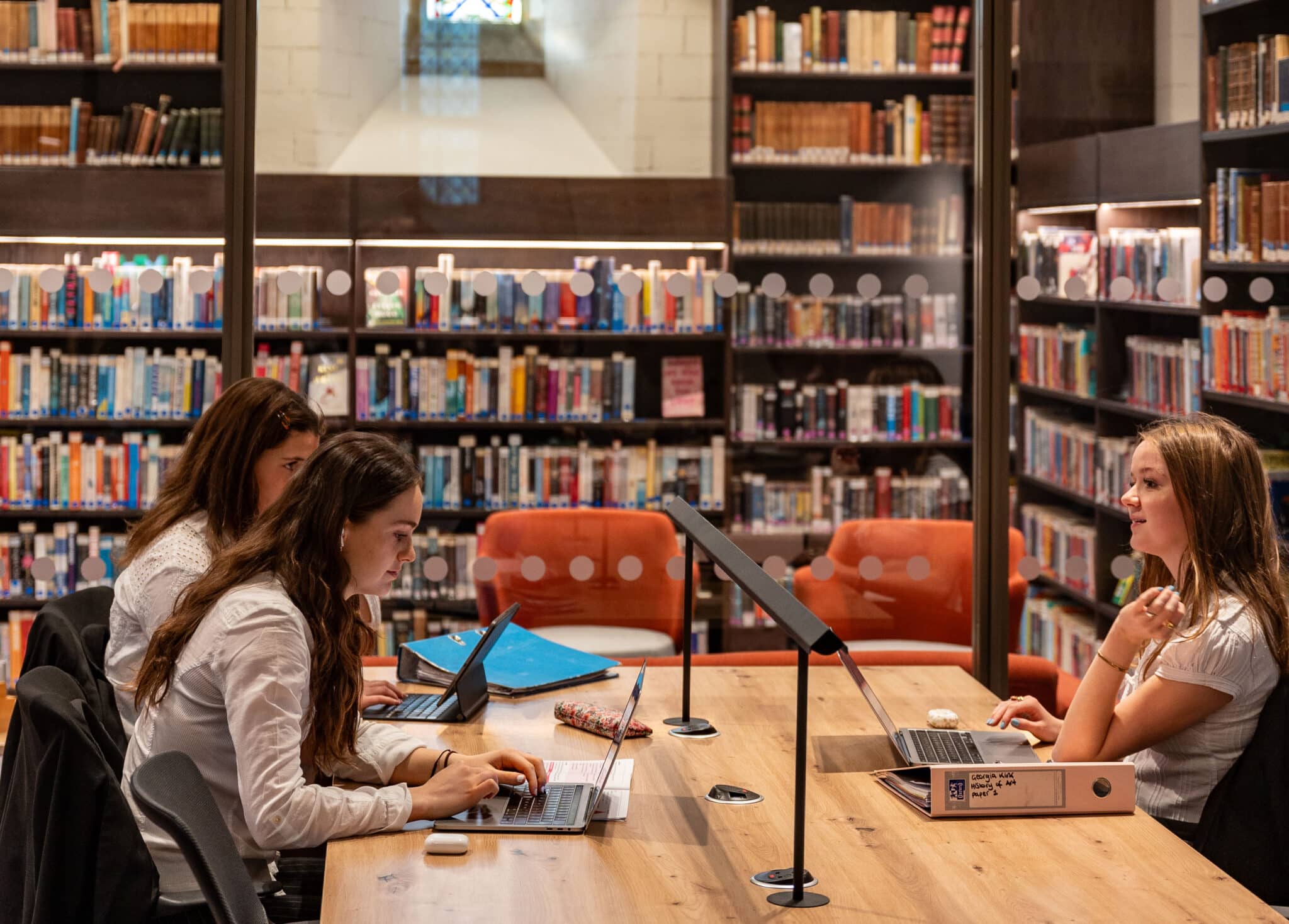
Emily Stannard is the Head Librarian at Bradfield and leads the team that manages the St Andrew’s Study Centre. She has visited libraries since she was a child but she understands that a library, or Study Centre, is not necessarily a draw for everyone. So this is where she, her team of information professionals, and St Andrew’s will make the difference.
Emily is a qualified Chartered Librarian, but is not perhaps the librarian you remember from your time at school. She is keen to make sure that the St Andrew’s is accessible and relevant to all, irrespective of a pupil’s year group, study preferences, or whether the pupil was a habitual or infrequent user of the Garrett Library. St Andrew’s will be a space for everyone.
I think that it’s really important to meet your users at the point at which they are, rather than at the point you might expect them to be
Emily’s conviction to create this all-embracing learning experience, comes from her own mixed relationship with the facility. When she was at secondary school Emily explains that the library was run by a classics master whom she found terrifying. She never felt at ease, fearful of making a noise and dreaded using the building. Contrasting this experience with that of university, where she learned how to embrace the opportunities, she vowed to break the school library stereotype and be a different kind of librarian – or information professional.
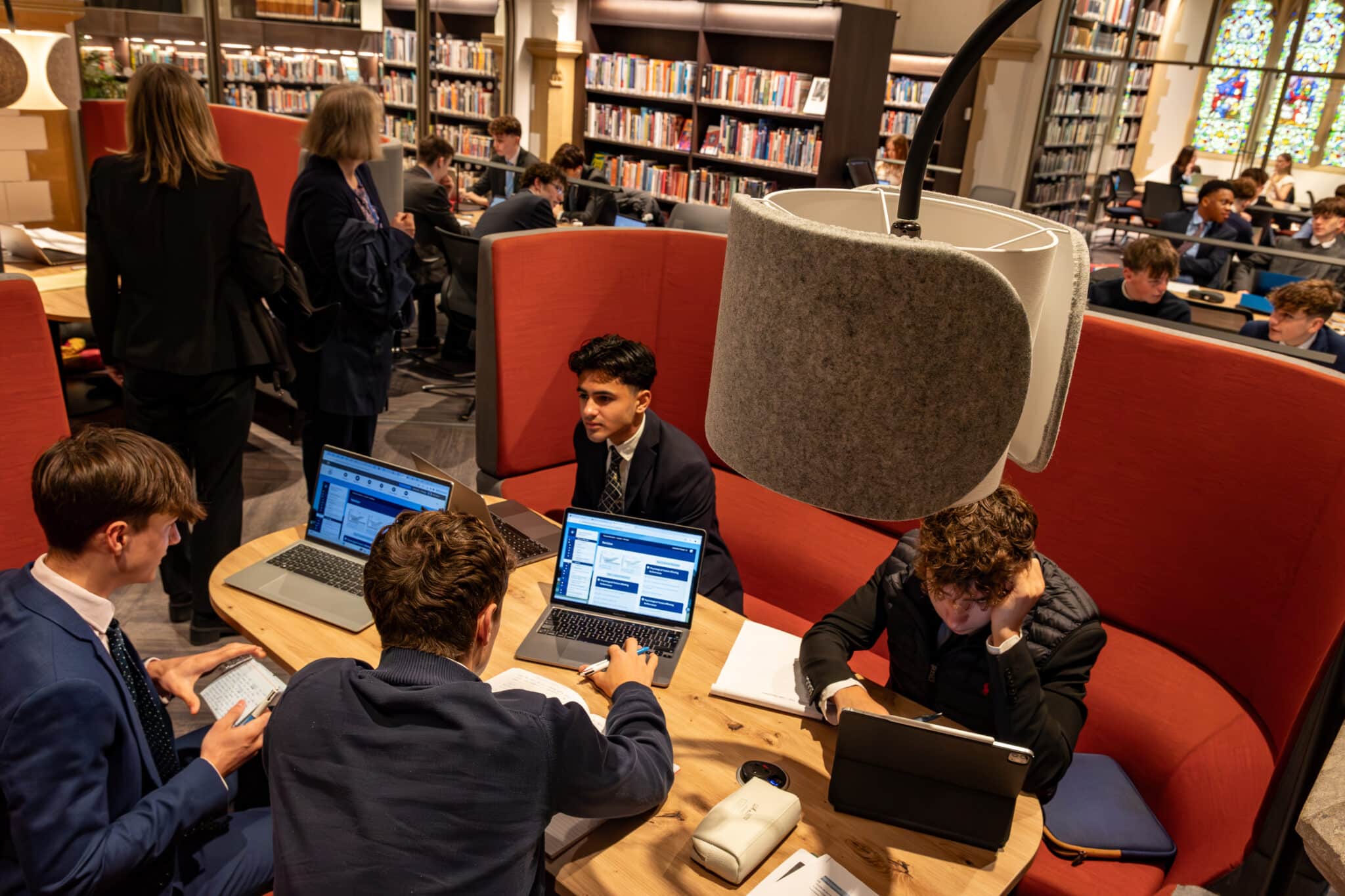
Emily’s first role after receiving her Masters degree was running library inductions in a further education college for vocational courses, everything from mechanics to fashion design and music. The attendees were not perhaps your traditional library-going types, but she wanted to find out how she could make the library relevant and accessible for them. So, she spent time talking to the various groups of students to find out what they were interested in, and what they needed and developed a concept of what ‘library support’ looked like for them. She quickly realised that people didn’t just come to a library for the information on the shelves, they came to meet up with their friends and fellow coursemates, they came to share ideas, do projects, and make plans.
‘St Andrew’s will be home to around 11,000 books, but it will not be a library’
St Andrew’s Concept, Neil Burch, Senior Master & Learning Design Lead
St Andrew’s may not be a library, but of course the books are still very important. The shelves in the Study Centre are filled by the mainstay of the collection from the Garrett Library, carefully curated to really meet the needs of the curriculum whilst at the same time retaining books of historical value and significance. In fact the process to ensure that the collection was relevant to the curriculum has been an ongoing project for Emily since her arrival at Bradfield 10 years ago.
The level of access to resources provided by St Andrew’s IS very much on par with the level provided by university libraries
The facility will allow pupils to access the huge wealth of resources that lie beyond the confines of the physical collection. The College subscribes to many different information portals, such as Britannica School, JSTOR, MASSOLIT and ‘Gale in Context‘ databases and publications, such as The Economist and the Hodder Education Magazines, providing users with a hybrid facility, both digital and physical. The level of access provided by St Andrew’s is very much on par with the level provided by university libraries, so College pupils and staff will continue to benefit from this amount and quality of information at their disposal.
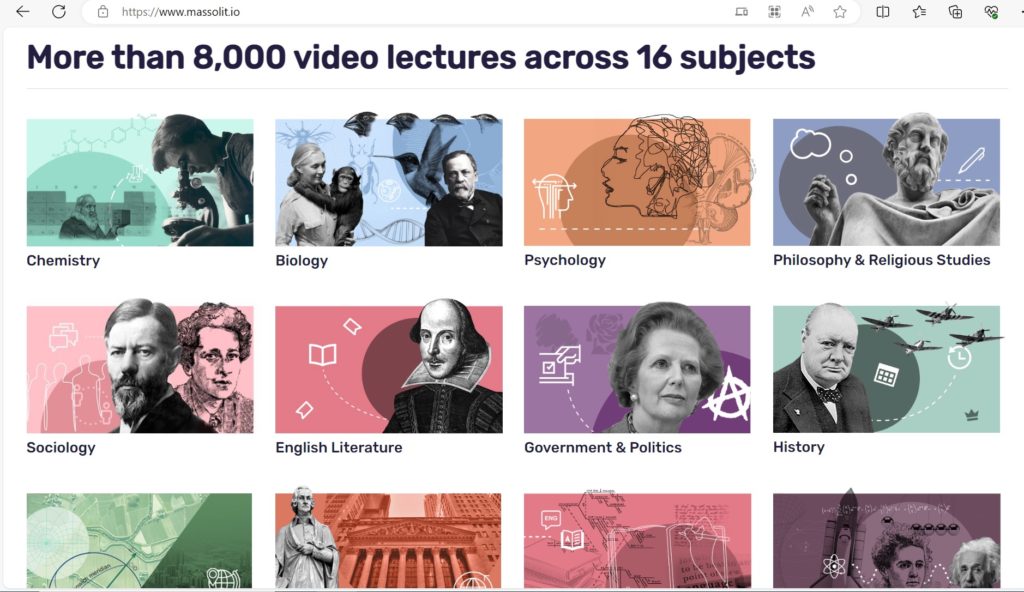
Running a library also requires professional support to ensure that the provision is as good as it can be – ‘you are only as good as your information resources. If your resources are out of date, or all over the place, then you are not going to derive the benefit from the facility that you should.’
Whilst the online resources can be accessed by every pupil from their personal laptops, fitting all the books into St Andrew’s has not been nearly such an easy task, but is one that has been very thoughtfully undertaken. As a conversion that seeks to maintain the historical integrity of the building, standardised bookshelves in which to house the collection were unfortunately out of the question. So, this left Emily with the interesting challenge of organising a collection in such a way that makes sense for the building as well as for the user.
As we don’t have a straight run of shelves, the standard logic is broken, so we have an opportunity to create subject-specific areas and put books together that make the best sense for the pupil and staff.
Fortunately, among her many talents, Emily hosted a board games club in the Garrett Library and she has put her tangential thinking strategies teased out in those scenarios into play when deciding how to place the books in the spaces offered by St Andrew’s.
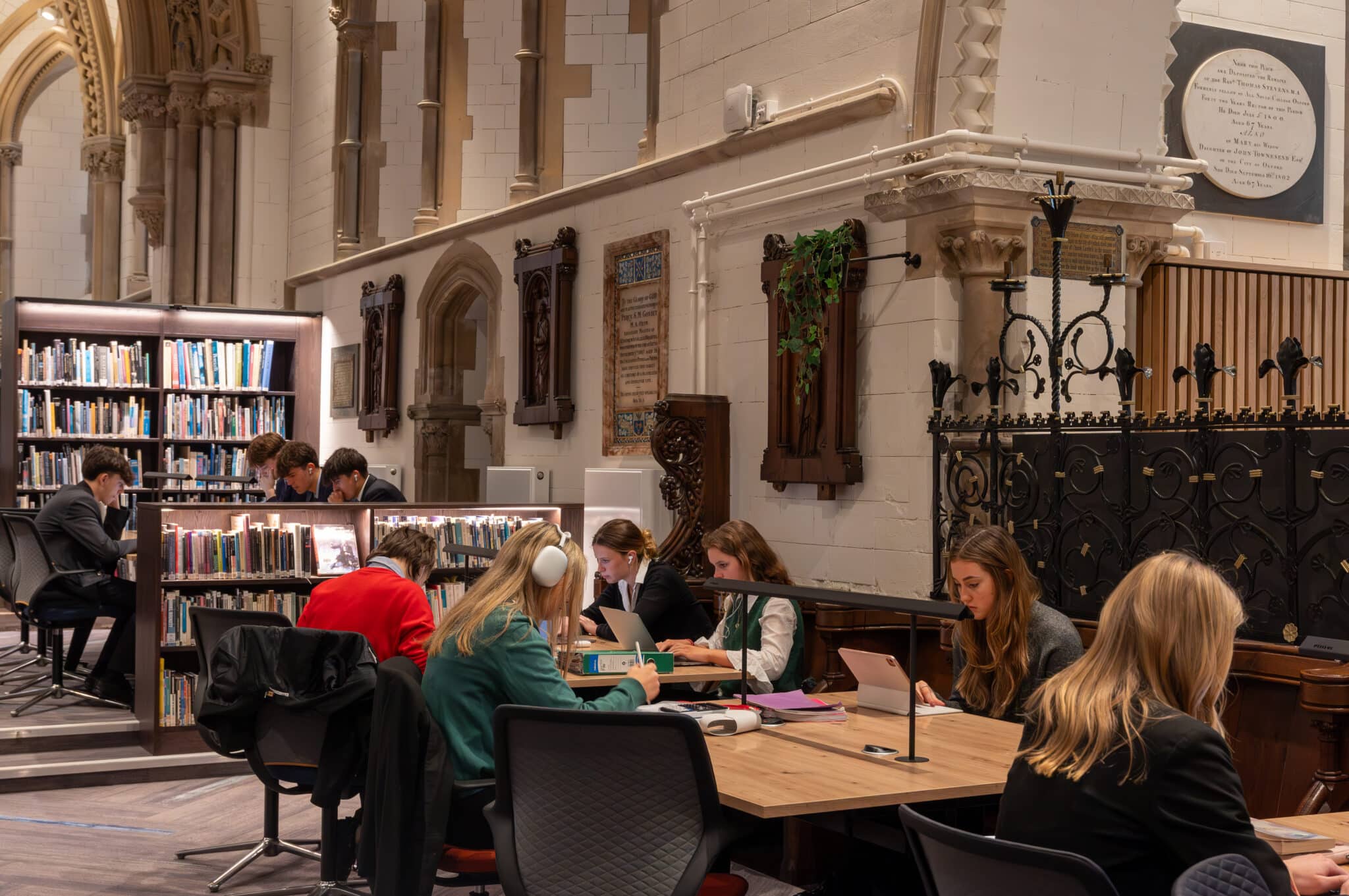
‘Dewey belong together?’
Libraries use a classification system to group related materials together so that they can be easily stored and found. The most common classification system used in British public libraries is the Dewey Decimal Classification and indeed it is was system uses in the Garrett library. Emily explains that whilst Dewey provides a fantastic broad logic for the classification it doesn’t always work for areas where knowledge has progressed, for example in expanding fields such as climate change which has many potential locations. Neither did Dewey know what curve balls the design of St Andrew’s or the new Faulkners’ curriculum would throw into the mix, so to accommodate all these variances, more creative licence was required.
‘to ensure that the collection truly serves the needs of Bradfield pupils I have chosen to overlay Dewey with how the subjects are grouped within the curriculum, creating a hybrid system that is bespoke to Bradfield and the needs of Bradfield pupils’
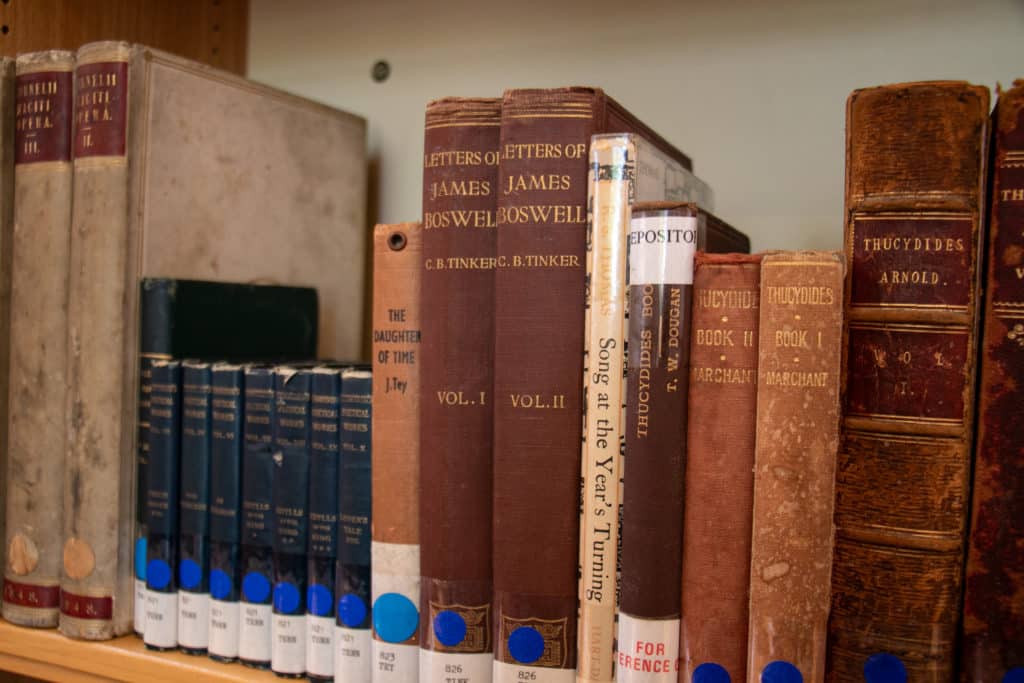
Unlike the main collection that will always be accessible, the Repository Collection, comprised of the older books that have been retained for their academic value but are unlikely to be requested frequently. These books are stored on the higher shelves above 2m where they can be protected, admired from afar and accessed if and when necessary. Other books of significance, including those written by Old Bradfieldians, will be stored within the archive area, where they can provide inspiration to today’s Bradfieldians.
The Library Team
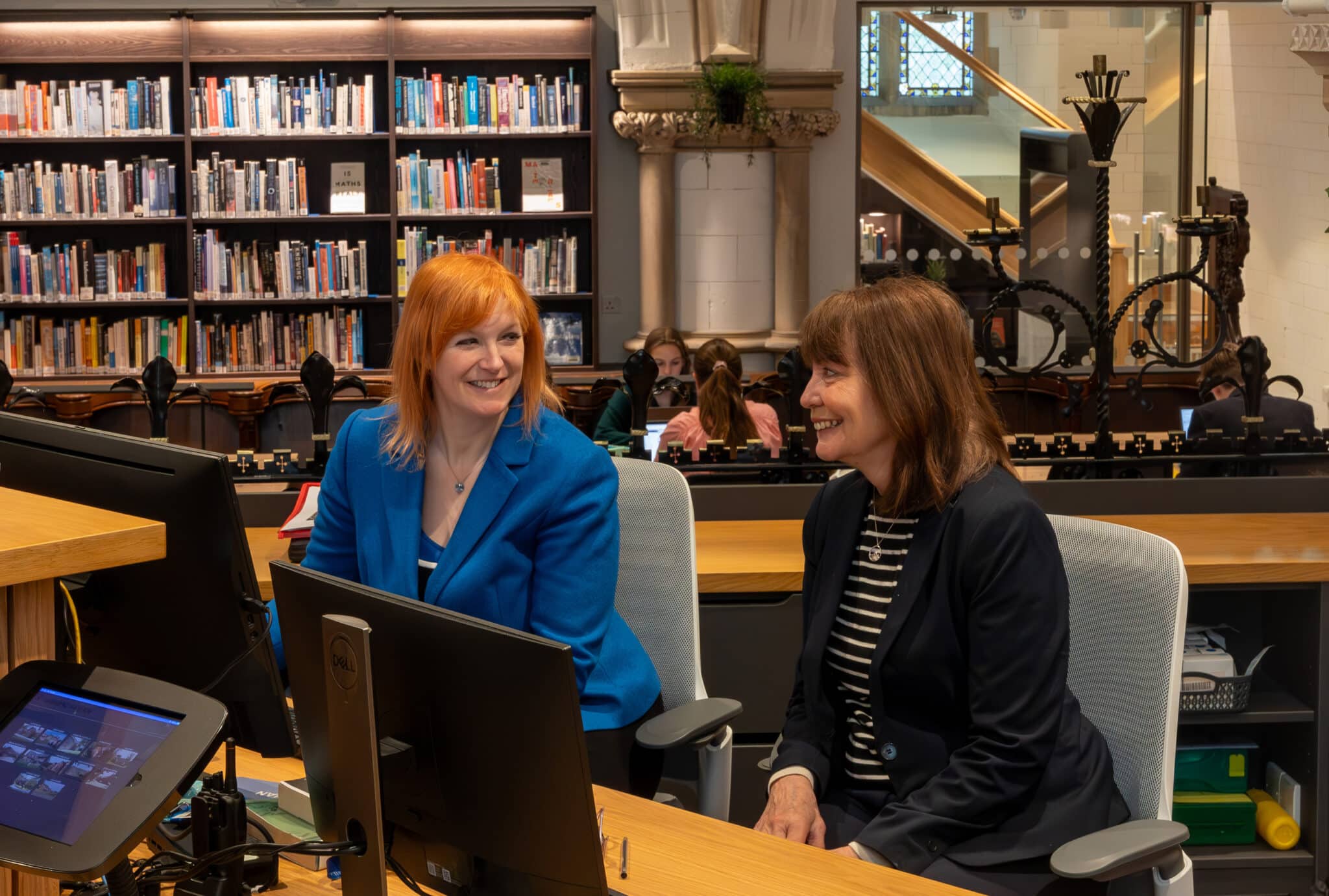
If St Andrew’s is at the heart of the College, then the information professionals – Emily and her team – are the beating heart of St Andrew’s itself.
A room full of books is not a library, it takes a person, an information professional, to bring the space to life’ in the same way that a room full of beds and medical equipment is not a hospital, you need to put the professionals in there for the place to function.
Yes, she wants to ensure that libraries are a great space for those people who are already avid readers and students, but she also wants to make sure that they serve those who have yet to discover the power of this kind of learning environment. So, her team prepares displays associated with serious current affairs topics such as Black History Month, as well as the perhaps more light-hearted enterprises to do with the World Cup – and underneath the draw is to make the library inclusive; A place for everyone to use and benefit from, so we are building positive association and good working practices sometimes by stealth!
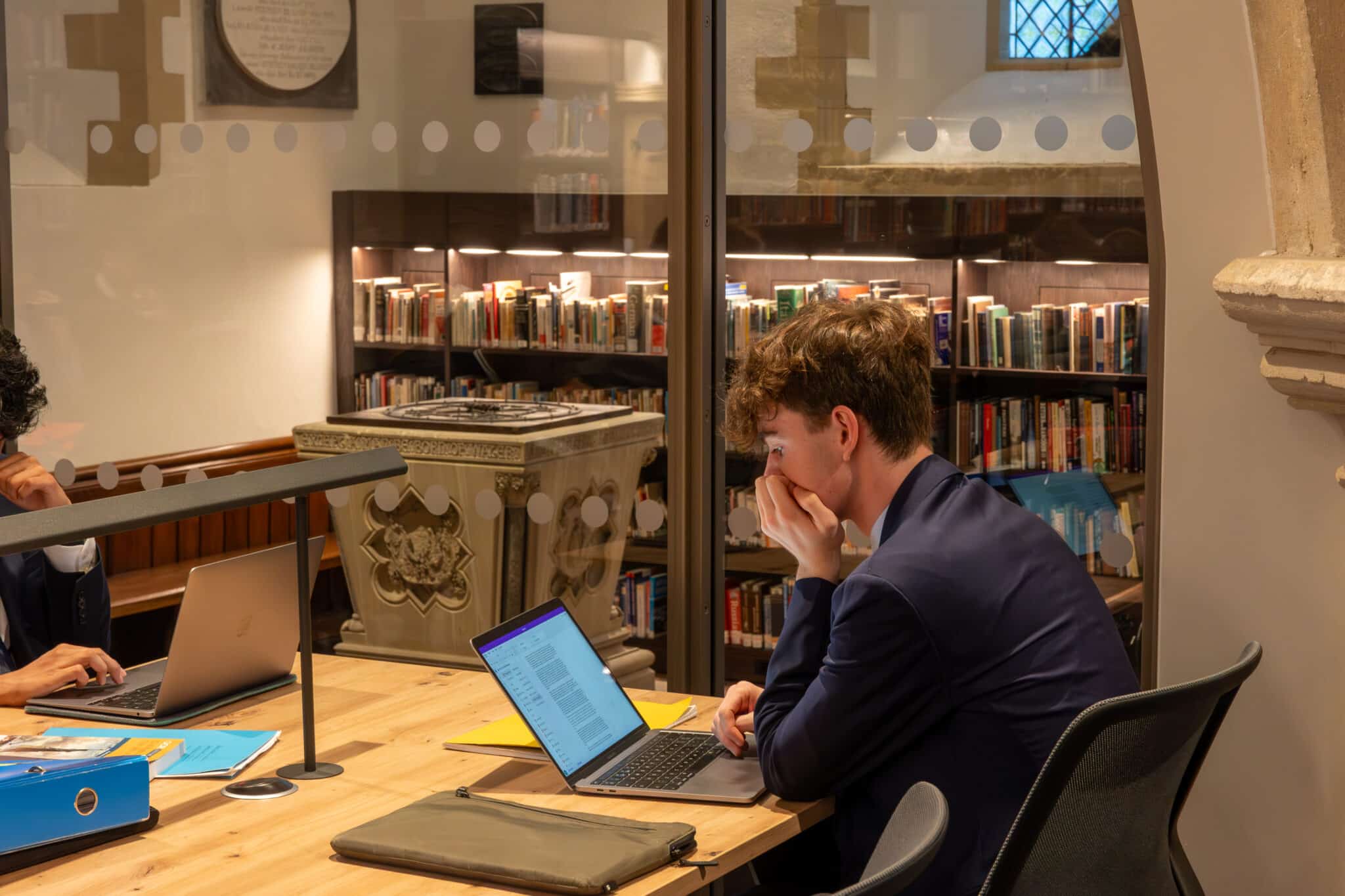
‘We’ve worked really hard to create a space for all pupils that will work for different learning styles and also the different stages of their education.’
Make your Mark on the St Andrew’s Study Centre
For those still interested in making a gift, it is very much still possible to do so, with the option for your name to appear on one of the elegant glass panels inside the centre for gifts of £1,000 or more. There are also still a limited number of spaces for names on the acoustic array for gifts of £5,000 or more visit the St Andrew’s Project webpage from more information. Equally if you would like to discuss your giving options, Kirsty Perkinson, our Philanthropy Lead would be happy to help, contact her at kperkinson@bradfieldcollege.org.uk or call 0118 964 4846.


